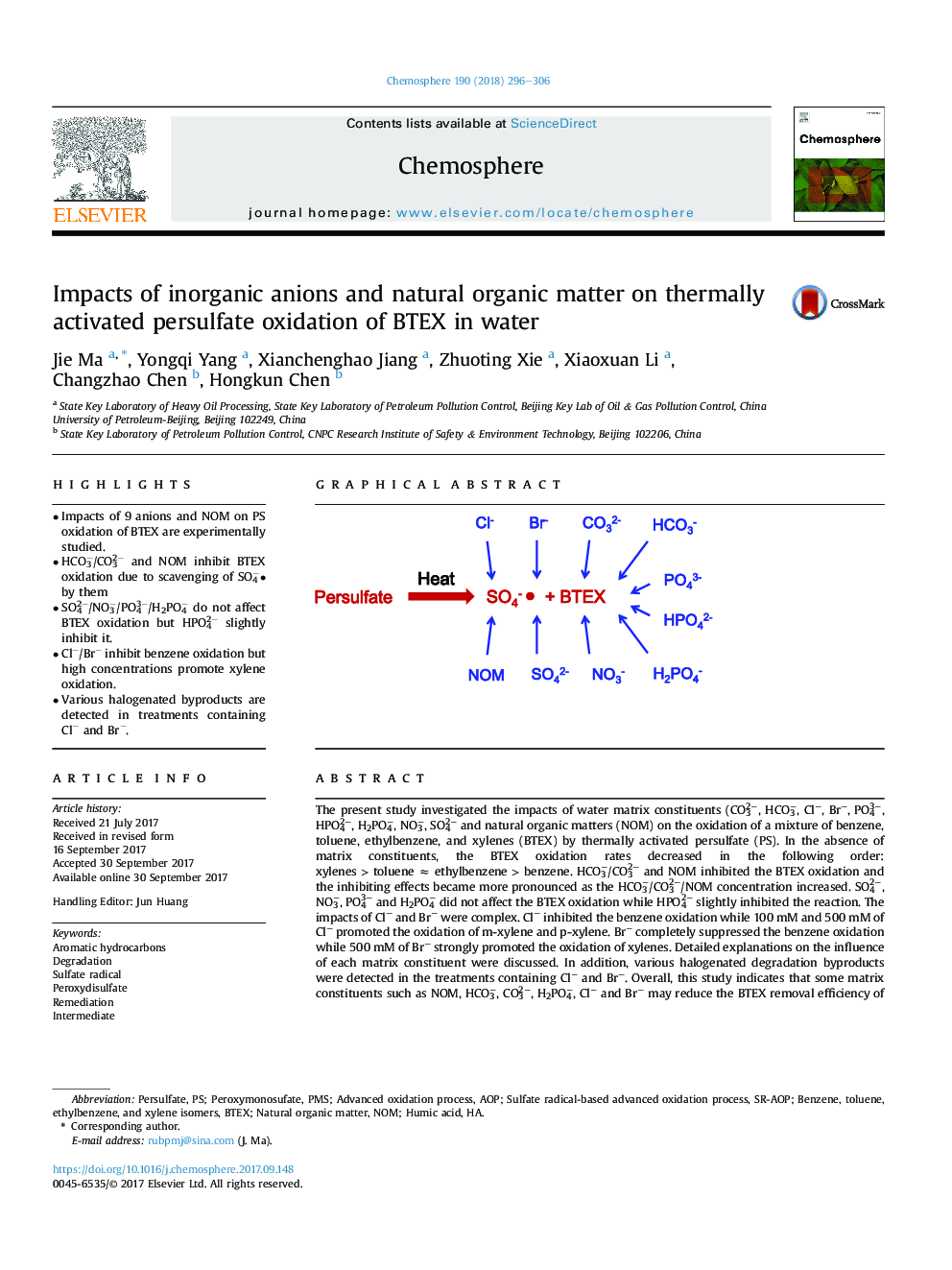| کد مقاله | کد نشریه | سال انتشار | مقاله انگلیسی | نسخه تمام متن |
|---|---|---|---|---|
| 5745793 | 1618781 | 2018 | 11 صفحه PDF | دانلود رایگان |

- Impacts of 9 anions and NOM on PS oxidation of BTEX are experimentally studied.
- HCO3â/CO32â and NOM inhibit BTEX oxidation due to scavenging of SO4â
- by them
- SO42â/NO3â/PO43â/H2PO4â do not affect BTEX oxidation but HPO42â slightly inhibit it.
- Clâ/Brâ inhibit benzene oxidation but high concentrations promote xylene oxidation.
- Various halogenated byproducts are detected in treatments containing Clâ and Brâ.
The present study investigated the impacts of water matrix constituents (CO32â, HCO3â, Clâ, Brâ, PO43â, HPO42â, H2PO4â, NO3â, SO42â and natural organic matters (NOM) on the oxidation of a mixture of benzene, toluene, ethylbenzene, and xylenes (BTEX) by thermally activated persulfate (PS). In the absence of matrix constituents, the BTEX oxidation rates decreased in the following order: xylenes > toluene â ethylbenzene > benzene. HCO3â/CO32â and NOM inhibited the BTEX oxidation and the inhibiting effects became more pronounced as the HCO3â/CO32â/NOM concentration increased. SO42â, NO3â, PO43â and H2PO4â did not affect the BTEX oxidation while HPO42â slightly inhibited the reaction. The impacts of Clâ and Brâ were complex. Clâ inhibited the benzene oxidation while 100 mM and 500 mM of Clâ promoted the oxidation of m-xylene and p-xylene. Brâ completely suppressed the benzene oxidation while 500 mM of Brâ strongly promoted the oxidation of xylenes. Detailed explanations on the influence of each matrix constituent were discussed. In addition, various halogenated degradation byproducts were detected in the treatments containing Clâ and Brâ. Overall, this study indicates that some matrix constituents such as NOM, HCO3â, CO32â, H2PO4â, Clâ and Brâ may reduce the BTEX removal efficiency of sulfate radical-based advanced oxidation process (SR-AOP) and the presence of Clâ and Brâ may even lead to the formation of toxic halogenated byproducts.
197
Journal: Chemosphere - Volume 190, January 2018, Pages 296-306